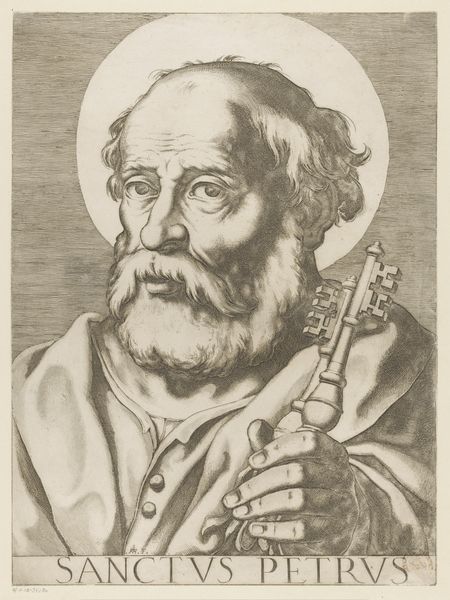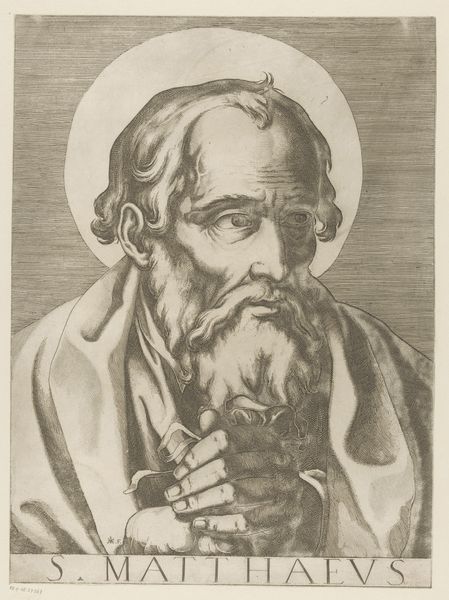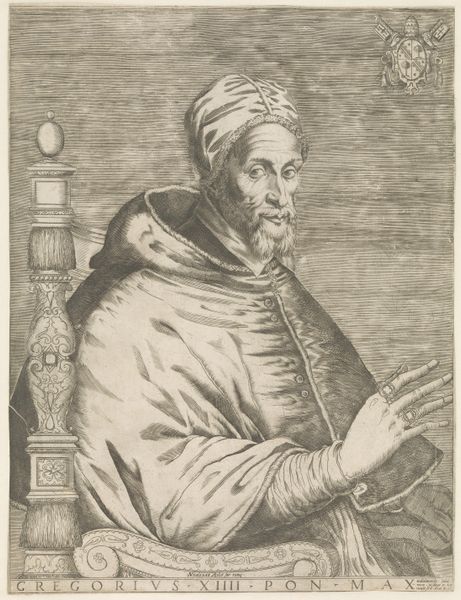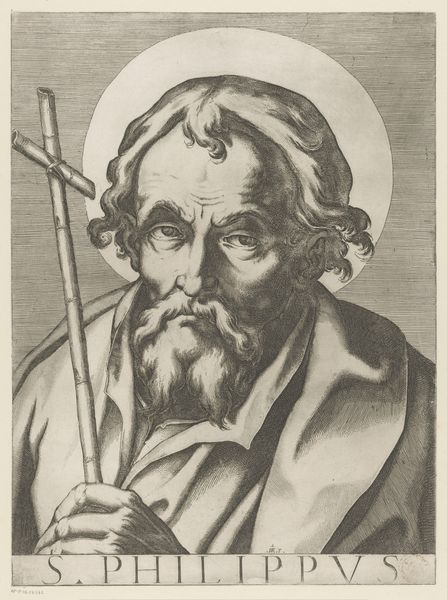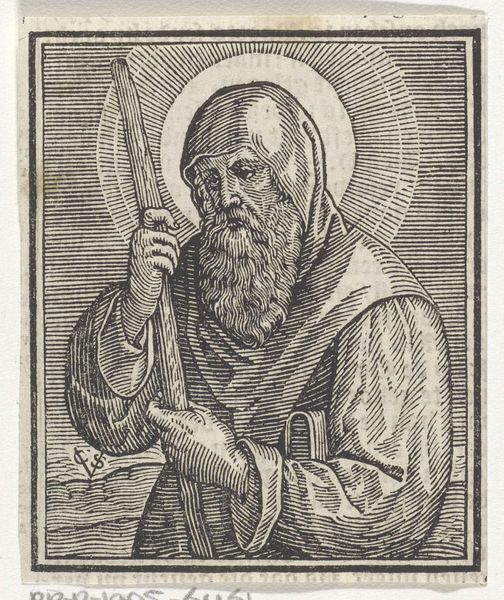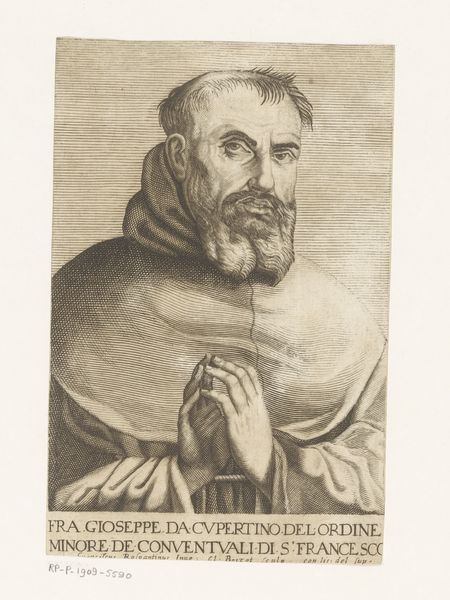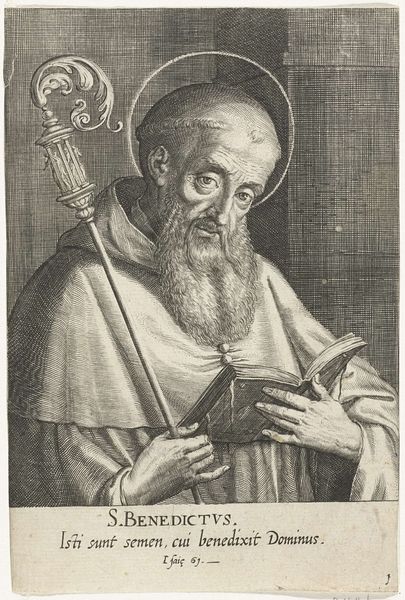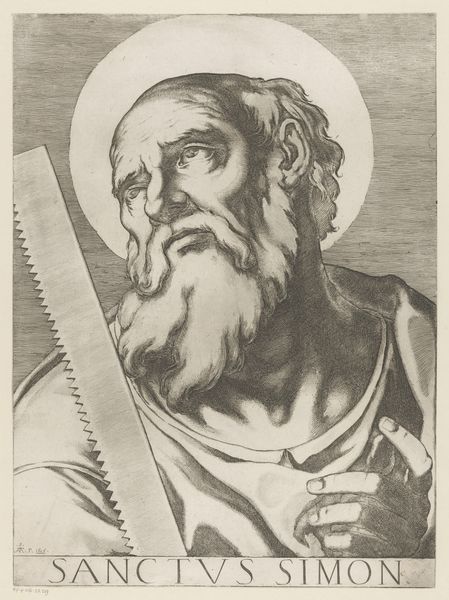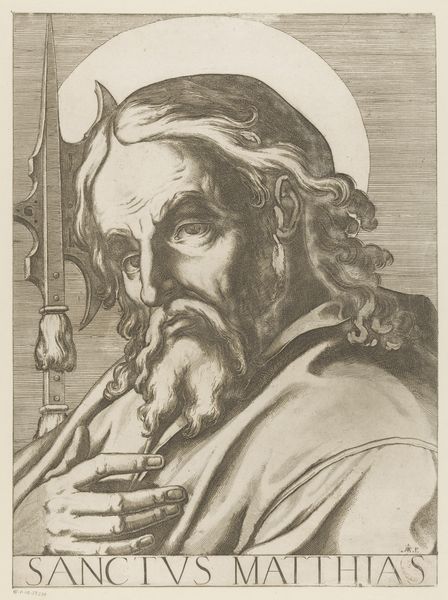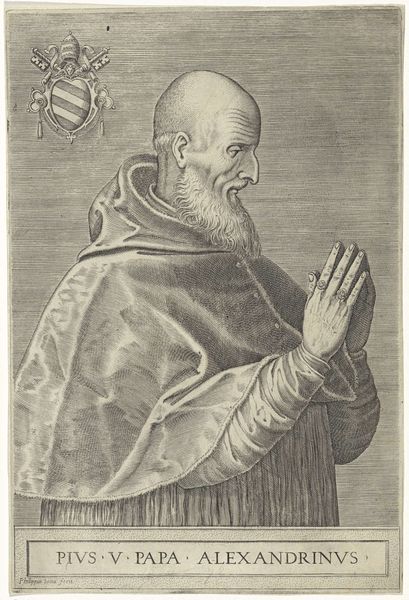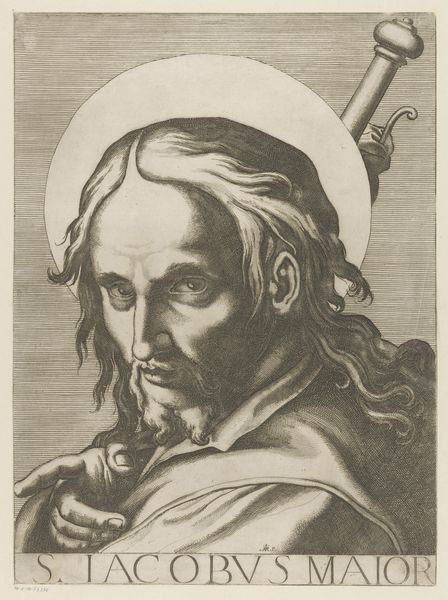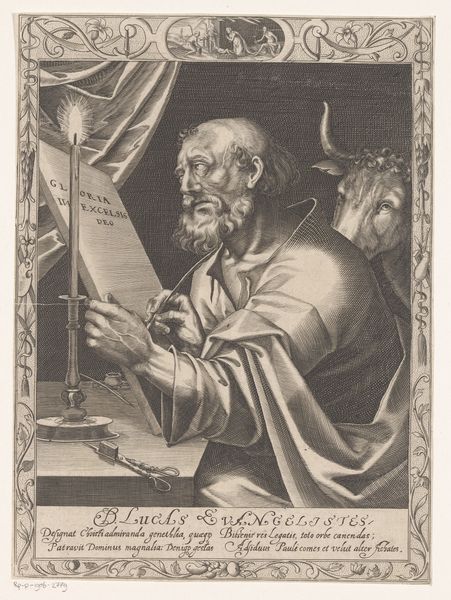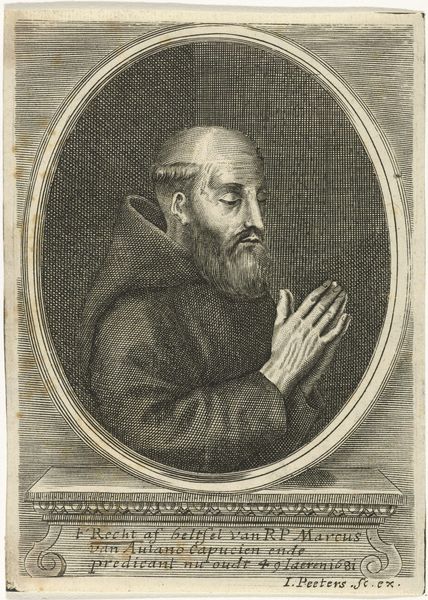
print, engraving
#
portrait
#
baroque
# print
#
portrait drawing
#
engraving
Dimensions: height 508 mm, width 375 mm
Copyright: Rijks Museum: Open Domain
Editor: So, here we have "Heilige Judas Thaddäus" from 1606-1607, an engraving by Raffaello Schiaminossi, currently held at the Rijksmuseum. The textures achieved in the rendering of the face are very striking. How do you read the imagery here? Curator: Well, immediately, I am drawn to the symbolic language at play. The halo, of course, signifies holiness, connecting him to a divine narrative. But consider the gaze, the directness. It's not merely a portrait; it's an invitation, a challenge perhaps, for the viewer to contemplate their own faith and the weight of tradition. What does the symbol in his hand tell you? Editor: It almost looks like an axe or a club of some sort, though it is round... Curator: Exactly. It signifies the instrument of his martyrdom but extends beyond that simple representation. The shape, the material – these would have carried specific cultural meanings for viewers at the time, potentially evoking themes of sacrifice, power, and the resilience of faith in the face of adversity. The Baroque period was full of such coded communication. Editor: So, even seemingly simple things like a rounded axe can carry a lot of cultural baggage? Curator: Absolutely. Everything from the folds of his drapery to the direction of his gaze contributes to a complex symbolic tapestry. Understanding these symbols allows us to access a richer understanding of the cultural memory embedded within the work and the period's psychological landscape. It really is visual storytelling at its finest. Editor: It's amazing how much is packed into one image! I'll definitely be paying more attention to the symbolic elements in Baroque art now. Curator: Indeed. The beauty is in the layered meanings and subtle cultural resonances waiting to be discovered.
Comments
No comments
Be the first to comment and join the conversation on the ultimate creative platform.
